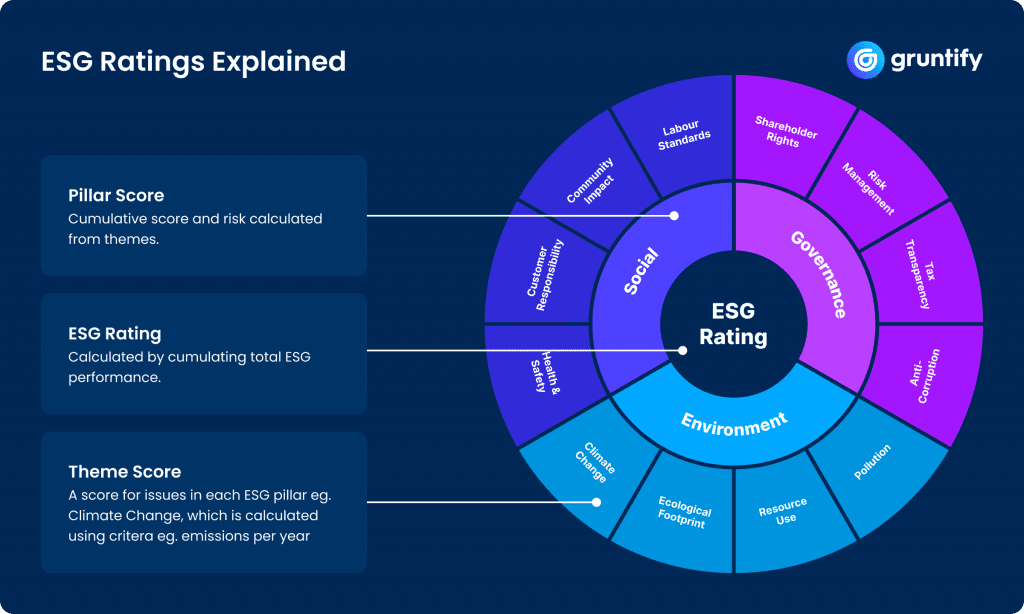Predictive maintenance as an asset management strategy relies on operational data to determine when an asset requires attention. Its goal is to reduce operational disruption because of unplanned maintenance. However, data collection and analysis can also play a role when it comes to environmental, social, and governance or ESG planning.
What is ESG?
Environmental, social, and governance (ESG) refer to a set of criteria that companies can voluntarily adhere to. By meeting these standards, companies demonstrate their commitment to environmental and social responsibility. Organizations participating in the movement receive an ESG score that informs investors and the public about their ongoing efforts.
Environmental
Environmental criteria focus on how a company works to protect environmental resources. It evaluates ecological risks a company may face and how they are mitigating those risks. Those efforts may include waste management, pollution reduction, energy conservation, or natural resource protection.
Social
Social standards consider how companies interact with employees, customers, communities, as well as suppliers. Evaluators look at volunteer initiatives and community involvement. They assess the work environment of employees and the standards in place for business partnerships. Social criteria focus on businesses’ responsibility to the society in which they operate.
Governance
Governance refers to an organization’s internal operations. Adhering to ESG standards means using transparent accounting methods and board member appointments. Companies need to demonstrate that their internal culture supports their environmental and social initiatives.
ESG Investing
Younger investors are increasingly using ESG scores as a barometer for investing in environmentally and socially conscious companies. Almost 90% of millennial investors wanted to pursue investments that reflected their values. However, the ongoing focus on climate change is moving more investors to look at a company’s ESG score.
An estimated $120 billion was committed to sustainable investments in 2021. That is almost $70 billion more than the $51 billion in 2020. In 2022, it’s estimated that one-third of all assets will include sustainable investments. As more investors move towards sustainable investing, the ESG score will become critical.
Although ESG scores are not required in financial reports, more publicly traded companies are including them. Many organizations are trying to get out in front of the requirement by voluntarily including the information. Most analysts believe that it is only a matter of time before ESG disclosures will be required.

How Can Predictive Maintenance Support ESG Planning?
Predictive maintenance solutions interface with the internet of things. They collect data from IoT-connected devices such as sensors to assess air quality, room temperatures, and lighting. They can analyze the data to determine energy use as well as air and noise pollution.
Predictive maintenance informs facility managers of the condition of their assets. The data allows organizations to:
- Extend the life of an asset
- Minimize the risk of business disruption
- Improve resource management
It also ensures that assets are performing at an optimum level to decrease energy use, reduce pollution, and create a healthy work or living environment.
Predictive maintenance not only helps organizations save money but also aids in evaluating ESG risks. This ability is essential as the environment changes and climate challenges become more prominent.
Environmental
IoT devices can pick up slight deviations in asset performance. Increased precipitation may shorten the life of a roof, or high winds may loosen shingles faster than expected. Being able to tie asset performance to climate change earlier enables management companies to adjust their behaviors to minimize risk.
Part of environmental responsibility is minimizing the operational impact on the environment. Knowing that climate change is shortening a roof’s lifecycle enables management companies to explore different materials or alter maintenance cycles. By extending the roof’s lifecycle, company’s can reduce the high environmental impact of the construction industry.
With predictive maintenance technology, facility and property management firms can provide the scientific data to support environmental-friendly initiatives. Whether it is maintaining heating and cooling systems or managing lighting to lessen energy use, predictive maintenance can highlight changes in asset performance long before it is noticeable.
Social
Hybrid work environments also present challenges for facility and property management. As more people work from home, office space may be reduced. However, most organizations assume that everyone will be in the office at least once or twice a week.
Flexibility will become a crucial factor in cost-effective property and facility management. According to Microsoft, 70% of workers want more remote work flexibility, while 65% want some in-person time with co-workers. Facilities must be able to accommodate these fluctuations in occupancy.
With integrated predictive maintenance, facility managers can monitor occupancy and adjust the air and temperature controls remotely. They can ensure that workspaces maintain their environmental quality while minimizing unnecessary energy use. Balancing environmental and social responsibility is an essential part of ESG planning.
Governance
Governance requires transparency. Outlining accounting methods lets investors evaluate a company’s financial stability. Providing environmental data through predictive maintenance solutions demonstrates transparency in how a business monitors its initiatives.
Unfortunately, companies have not always been open to disclosing their ESG efforts which makes it crucial that they have data to support their claims if they want to attract potential investors. Deploying IoT devices and integrated predictive maintenance for interior or exterior assets can help organizations plan their ESG initiatives.
Implementing Predictive Maintenance in Support of ESG
Every property, facility, or field operation is different because every company has a different culture that guides its operations. Predictive maintenance solutions need to support those differences by providing a flexible solution that allows customization of workflows. The solutions should also supply data to support ESG initiatives.
Gruntify‘s API enables an integrated solution that can take data from IoT devices and issue work requests. Its solution does not force a single management strategy but provides the flexibility to ensure that assets are maintained regardless of the approach. The collected data can be analyzed and used in support of ESG planning and reporting.
If your organization is looking for a flexible solution for your maintenance needs, contact us to begin the process of implementing predictive maintenance processes that can ensure sustained growth through ESG planning.

